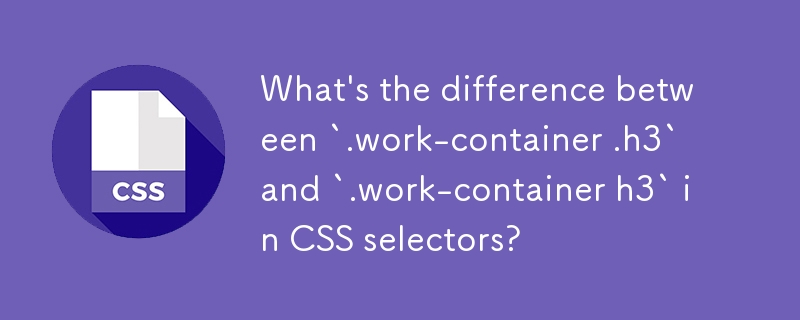Home >Web Front-end >CSS Tutorial >What\'s the difference between `.work-container .h3` and `.work-container h3` in CSS selectors?
What\'s the difference between `.work-container .h3` and `.work-container h3` in CSS selectors?
- Mary-Kate OlsenOriginal
- 2024-10-27 08:09:02661browse

Decoding the Dot in CSS
CSS selectors employ various symbols to target specific elements in an HTML document. Among these symbols, the dot (.) holds significance when defining classes.
Class vs. Descendant
Consider the following CSS selectors:
<code class="css">.work-container .h3 {
Styles...
}</code>
<code class="css">.work-container h3 {
Styles...
}</code>
The difference between these selectors lies in the extra dot in the first definition.
- Dot Operator (.): Target elements with a specific class. For example, ".h3" selects all elements with the class "h3".
- Concatenated Dots (. . ): Establish a descendant relationship between elements. The selector ".work-container .h3" targets "h3" elements that are descendants of an element with the class "work-container".
Other Cases:
The dot can also be used in other contexts:
- Element Selection: When a selector starts with a dot, it signifies class targeting (e.g., ".class-name")
- Element Separation: When two selectors with dots are separated by a space (e.g., ".outside .inside"), it signifies elements with the second class being descendants of elements with the first class.
- Element Intersection: When two dotted selectors are adjacent (e.g., ".name1.name2"), it signifies elements that have both specified classes.
These rules provide versatility in targeting elements based on their class attributes and their position within the HTML structure.
The above is the detailed content of What\'s the difference between `.work-container .h3` and `.work-container h3` in CSS selectors?. For more information, please follow other related articles on the PHP Chinese website!

